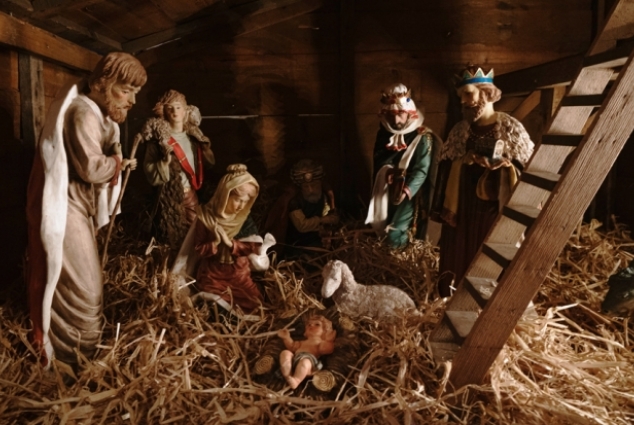Who really was the Nativity?

Growing up, my brothers and I took turns arranging the figures in my parents' large nursery. I liked to show the three magi who walked in procession to the manger, showing them on their journey following the star of Bethlehem.
My brothers were more concerned with cramming the three wise men, the shepherds, the angel and the various farm animals in a tight circle around the manger, all Jewish and aah-ing to the baby Jesus. I put my foot down a year, however, when my brother tried to add a toy elephant to the crowd. Scripture, after all, says nothing about pachyderms.
My impulse towards literality may have been a little misleading, however. It turns out that the scriptures don't say much about the nativity figures we take for granted either. Even if baby Jesus lay in a manger it can be interpreted.
There are two stories about the birth of Jesus, which are found in the gospels of Matthew and Luke. In Matthew's story, Mary and Joseph already live in Bethlehem, so they don't have to take refuge in a stable. Some magi (the scriptures never say that there are three, however) follow a star to Jerusalem, where they enter the house of Mary and Joseph (Matt. 2:11). They warn the family of King Herod's plot to kill the baby Jesus and the family flees to Egypt. They then return and open a shop in Nazareth, never returning to their home in Bethlehem (Matt. 2:23).
In Luke's version, the magi are nowhere to be seen. Instead, it is the shepherds who are the first to hear the good news of the savior's birth. In this gospel, Mary and Joseph already live in Nazareth but must return to Bethlehem for a census; this is what filled the inns and made Mary's work in a stable necessary (Luke 2: 7). After the census, we can only assume that the family has returned peacefully to Nazareth without a prolonged detour to Egypt.
Some of the differences between the two gospels are due to their different purposes. With the flight to Egypt and the murder of Herod's innocents, the author of Matthew portrays Jesus as the next Moses and describes how the baby Jesus fulfills several specific prophecies of the Hebrew Bible.
Luke's author, on the other hand, poses Jesus as a challenge to the Roman emperor, whose titles include "Son of God" and "Savior". The angel's message to the shepherds proclaims that here he is a savior who brings salvation not through political power and dominion, but instead through a radical mixing of social order, one that will lift the humble and feed the hungry (Luke 1: 46-55).
While the differences between the two gospels may seem important, the important takeaway is found in what the two have in common instead of how they vary. Both childhood narratives describe a miraculous birth too important to be private. The figures around Jesus, whether they are divine angels or human magi or shepherds, do not waste time spreading the good news of his birth